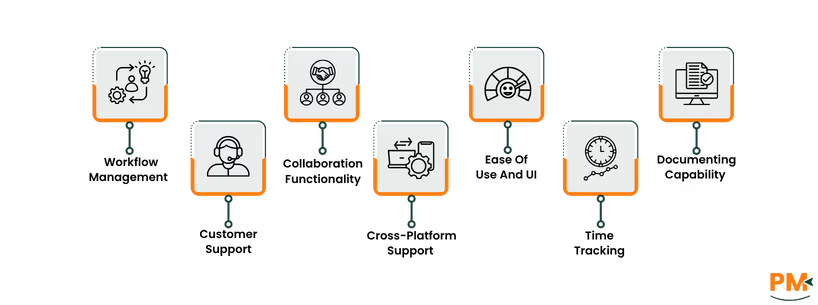
Choosing between Zendesk and Jira is like picking between a precision-crafted helpdesk and a multitool built for agile teams. Zendesk focuses on delivering exceptional customer support with an intuitive interface, while Jira, particularly Jira Service Management, offers robust tools for IT service management (ITSM) and project tracking. This head-to-head Zendesk vs Jira comparison dives into their features, pricing, and user experiences to help you pick the right tool for your team.

Zendesk is a leading customer support platform designed to manage inquiries, tickets, and support across multiple channels like email, chat, and social media. Known for its ease of use, Zendesk helps businesses deliver seamless customer experiences. It’s ideal for teams prioritizing quick setup and omnichannel support, with features like AI-powered automation and a robust knowledge base.
Zendesk Pros And Cons
Pros:
- Intuitive Interface: Highly praised for its user-friendly design, making it easy for teams to adopt
- Omnichannel Support: Supports WhatsApp, Slack, Microsoft Teams, live chat, email, and voice for comprehensive customer interactions
- Robust Integrations: Over 1,600 integrations, including Slack and Google Workspace, enhance workflow efficiency
- AI Features: Offers generative AI for auto-generating responses and summarizing conversations with an add-on
Cons:
- No Free Plan: Starts at $25/user/month, which may be costly for small teams
- Notification Overload: Some users report excessive email notifications, which can be distracting

Jira, developed by Atlassian, is a versatile project management tool widely used for software development and IT service management. Jira Service Management, a specialized version, focuses on ITSM and customer support, offering features like incident and asset management. It’s ideal for technical teams needing customization and integration with development workflows.
Jira Pros And Cons
Pros:
- Advanced ITSM Features: Includes incident, change, and asset management, perfect for IT teams
- High Customization: Offers templated automation and flexible workflows for diverse use cases
- Free Plan: Supports up to 3 users with limited features, ideal for small teams
- Atlassian Ecosystem: Seamless integration with tools like Confluence and Bitbucket
Cons:
- Steep Learning Curve: Complex interface can be overwhelming for new users
- Performance Issues: Some users report sluggishness with high-volume data

Zendesk
Zendesk excels at ticket-centric workflow automation through its powerful triggers, macros, and AI-powered agent copilot. These tools allow support teams to automatically assign, route, escalate, and send reminders based on ticket conditions—be it priority, inactivity, or SLA breaches. Although it doesn’t offer native project-style task lists or status boards, you can integrate add-ons or build custom solutions to fill the gap . Overall, Zendesk’s strength lies in operational automation within a support environment: workflows are efficient, scalable, and designed for customer-facing processes.
Jira Service Management
Jira Service Management, built on Atlassian’s robust issue-tracking engine, offers full-fledged configurable workflows. You define statuses (Open, In Progress, Done), transitions, automation rules, approvals, SLAs, and dynamic forms. These workflows map directly to request types—like incidents, service requests, or change tickets—ensuring each ticket follows a defined lifecycle. Jira supports ITIL-inspired workflows out of the box and lets you create company-specific flows with conditions, branching, and customizable automation recipes. With advanced customization, it functions nearly as a project-management tool embedded in a helpdesk.
Zendesk
Zendesk is engineered for customer-facing support. It consolidates email, chat, phone, social, and AI interactions into its ticketing interface. Agents benefit from real-time dashboards, SLA management, collision detection, and integrated self-service tools like knowledge bases and community forums—all complemented by AI automation to speed up resolution. Its intuitive agent interface and fast onboarding make it ideal for teams focused strictly on customer support, though all features—such as reporting, translation, and AI—come in higher-tier plans.
Jira Service Management
Jira Service Management turns customer interactions into structured service tickets that flow through configurable workflows. Requests submitted via portals, email, or Slack are automatically categorized and queued. It offers SLA tracking, collision alerts, canned responses, and integration with knowledge bases like Confluence. Automations and ITIL workflows support incident, problem, and change management, making support both systematic and scalable. Because it’s part of the Jira ecosystem, it integrates tightly with development tools—ideal when support intersects heavily with engineering or IT ops.
Zendesk
Zendesk fosters collaboration through shared tickets, comments, and @mentions. Integrations with Slack and Microsoft Teams enable real-time communication, making it ideal for customer support teams coordinating on tickets and inquiries.
Jira
Jira supports collaboration with comments, @mentions, and integrations with Slack and Microsoft Teams. Its integration with the Atlassian ecosystem, particularly Confluence, enhances cross-team collaboration for technical projects, though its complexity may challenge non-technical users.
Zendesk
Zendesk offers native apps for iOS, Android, and desktop (Windows, macOS), with browser-based access for seamless synchronization. Most features are available on mobile, though advanced reporting is optimized for desktop Zendesk.
Jira
Jira provides apps for iOS, Android, and desktop, with browser-based access. Mobile apps support most features, but complex tasks like Gantt charts are better on desktop. Some users report occasional mobile performance issues Atlassian.
Zendesk
Zendesk’s clean, intuitive interface is highly praised, making it accessible for beginners. Pop-up tutorials and an AI chatbot enhance usability, though some advanced features may require training Zapier.
Jira
Jira’s interface is feature-rich but complex, leading to a steeper learning curve. Guided tours and extensive documentation help, but non-technical users may find it overwhelming.
Zendesk
Zendesk offers time tracking via the Time Tracking app in its Marketplace, allowing agents to log time on tickets with start/stop timers. It lacks native time tracking, requiring third-party integrations for advanced features.
Jira
Jira provides native time tracking with fields like Original Estimate, Remaining Estimate, and Time Spent, updated automatically after worklog entries. It supports third-party integrations for enhanced functionality, making it more flexible for project tracking.
Zendesk
Zendesk allows attaching files to tickets and integrates with cloud storage like Google Drive and Dropbox. Its knowledge base feature supports organizing and sharing information, though it lacks built-in document creation.
Jira
Jira integrates with Confluence for advanced documentation, enabling teams to create and share detailed documents. However, Confluence requires a separate subscription, adding to costs. Jira also supports attaching files to issues.

Plan | Zendesk | Jira Service Management |
Free | No free plan; 6-month trial for startups | $0 for up to 10 users (limited features) |
Team/Standard | $55/user/month | $7.53/user/month |
Professional/Premium | $115/user/month | $13.53user/month |
Enterprise | Custom Pricing | Custom Pricing |
Disclaimer: The pricing is subject to change.
Zendesk is ideal for:
- Customer support teams needing a user-friendly ticketing system
- Businesses requiring omnichannel support for email, chat, and social media
- Teams prioritizing ease of use and quick setup
- Organizations leveraging AI for automated customer interactions
Who Is Jira Best For?
Jira is best suited for:
- IT teams requiring advanced ITSM features like incident and asset management
- Project management teams, especially in software development
- Organizations using other Atlassian tools for seamless integration
- Teams needing high customization for technical workflows
Which One Should You Go For?
The choice between Zendesk and Jira depends on your team’s priorities. Zendesk is the better option for customer support teams seeking a simple, intuitive platform with omnichannel capabilities. Its AI-driven features and ease of use make it ideal for external customer interactions. Conversely, Jira, particularly Jira Service Management, excels for IT teams and project managers needing robust ITSM and project tracking features. Its customization and Atlassian integrations suit technical workflows, though its complexity may challenge non-technical users. Test both tools via free trials to find the best fit for your team’s needs and budget.
